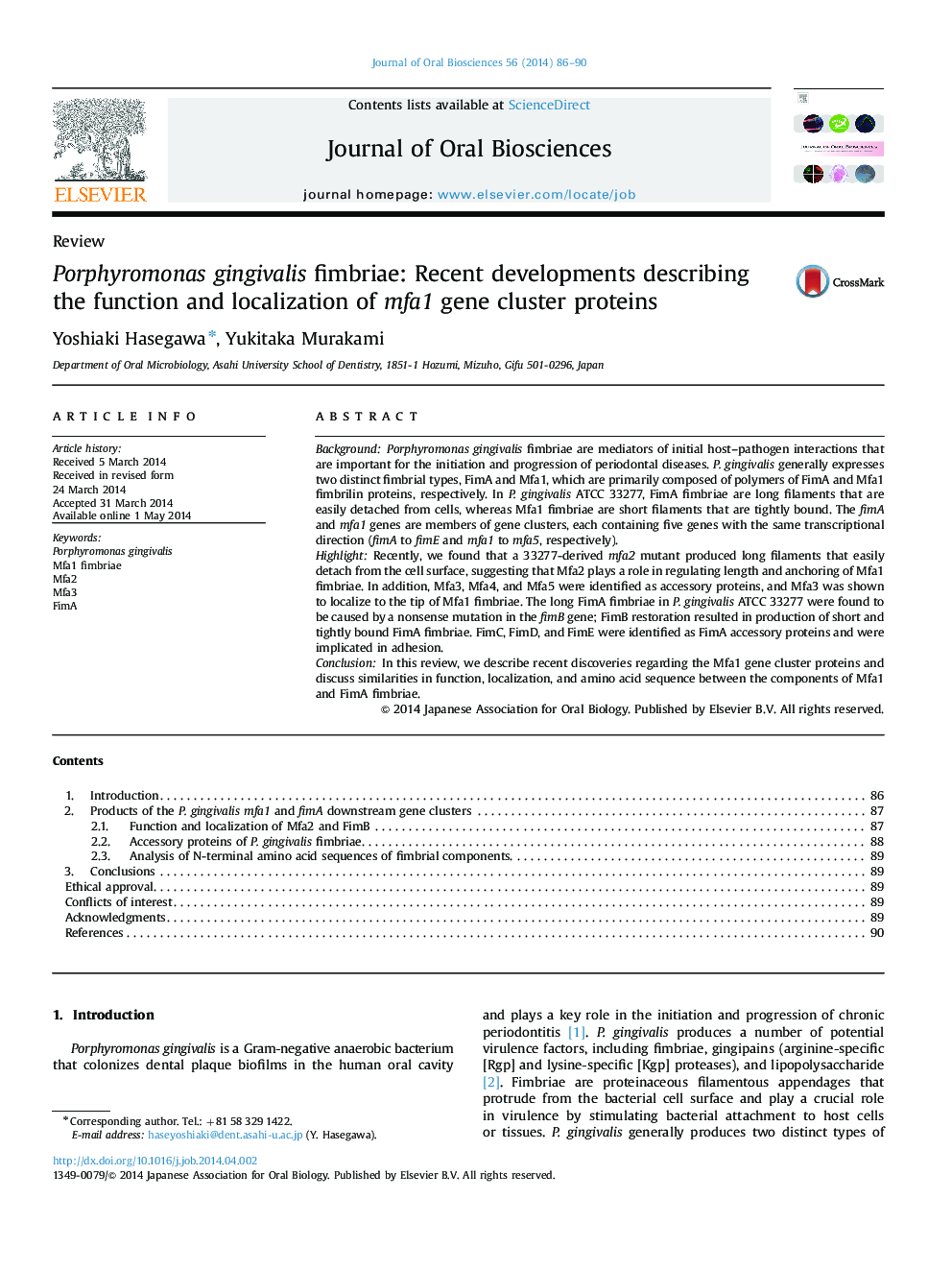| Article ID | Journal | Published Year | Pages | File Type |
|---|---|---|---|---|
| 2776828 | Journal of Oral Biosciences | 2014 | 5 Pages |
BackgroundPorphyromonas gingivalis fimbriae are mediators of initial host–pathogen interactions that are important for the initiation and progression of periodontal diseases. P. gingivalis generally expresses two distinct fimbrial types, FimA and Mfa1, which are primarily composed of polymers of FimA and Mfa1 fimbrilin proteins, respectively. In P. gingivalis ATCC 33277, FimA fimbriae are long filaments that are easily detached from cells, whereas Mfa1 fimbriae are short filaments that are tightly bound. The fimA and mfa1 genes are members of gene clusters, each containing five genes with the same transcriptional direction (fimA to fimE and mfa1 to mfa5, respectively).HighlightRecently, we found that a 33277-derived mfa2 mutant produced long filaments that easily detach from the cell surface, suggesting that Mfa2 plays a role in regulating length and anchoring of Mfa1 fimbriae. In addition, Mfa3, Mfa4, and Mfa5 were identified as accessory proteins, and Mfa3 was shown to localize to the tip of Mfa1 fimbriae. The long FimA fimbriae in P. gingivalis ATCC 33277 were found to be caused by a nonsense mutation in the fimB gene; FimB restoration resulted in production of short and tightly bound FimA fimbriae. FimC, FimD, and FimE were identified as FimA accessory proteins and were implicated in adhesion.ConclusionIn this review, we describe recent discoveries regarding the Mfa1 gene cluster proteins and discuss similarities in function, localization, and amino acid sequence between the components of Mfa1 and FimA fimbriae.
